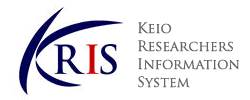-
Affiliation
-
Graduate School of Business Administration (Hiyoshi)
-
Position
-
Professor

KEIO RESEARCHERS INFORMATION SYSTEM |
Details of a Researcher
このページはJavascriptを使用しています。すべての機能を使用するためにはJavascript を有効にする必要があります。
Goto, Rei
|
|
|
Kobe City General Hospital, Resident in Medicine
Konan University, Faculty of Economics, Lecturer
Konan University, Faculty of Economics, Associate Professor
Kyoto University, The Hakubi Institute of Advanced Research, Associate Professor
Kyoto University, School of Medicine
University, Graduated, Other
Kyoto University, Graduate School of Economics
Graduate School, Completed, Doctoral course
学士(医学), Kyoto University, Coursework, 1998.03
博士(経済学), Kyoto University, Coursework, 2006.05
Humanities & Social Sciences / Economic policy
Humanities & Social Sciences / Public economics and labor economics
Life Science / Medical management and medical sociology
health technology assessment
health policy
health economics
behavioral economics
Health Economics
後藤励, 井深陽子, 有斐閣, 2020.03
医療レジリエンス -医学アカデミアの社会的責任-
FUKUHARA Shunichi,GOTO Rei,NAKAYAMA Takeo,KAWAKAMI Koji,FUKUMA Shingo, 医学書院, 2015
日本のお医者さん研究
MORI Takeshi,GOTO Rei, 東洋経済新報社, 2012
医療経済学講義
GOTO Rei, 東京大学出版会, 2011
Scope: 第10章 生活習慣と行動変容
健康行動経済学
YODA Takanori,GOTO Rei,NISHIMURA Shuzo, 日本評論社, 2009
Difference in time and risk preferences: physicians and general population across genders
Kasahara S., Kato H., Goto R.
Health Economics Review 15 ( 1 ) 2025.12
Primary Care Physician Characteristics and Low-Value Care Provision in Japan
Miyawaki A., Mafi J.N., Abe K., Klomhaus A., Goto R., Kitajima K., Sato D., Tsugawa Y.
JAMA Health Forum 6 ( 6 ) 2025.06
Suzuki Wataru, Goto Rei
Iryo To Shakai (The Health Care Science Institute) 35 ( 1 ) 5 - 10 2025.04
ISSN 09169202
Takeuchi M., Obara H., Furube T., Kawakubo H., Kitago M., Okabayashi K., Fujisaki H., Aoyama J., Morimoto Y., Amemiya R., Sano J., Nakadai J., Goto R., Sato Y., Kitagawa Y.
British Journal of Surgery 112 ( 4 ) 2025.04
ISSN 00071323
Konishi S., Masaki K., Shimamoto K., Ibuka Y., Goto R., Namkoong H., Chubachi S., Terai H., Asakura T., Miyata J., Azekawa S., Nakagawara K., Tanaka H., Morita A., Harada N., Sasano H., Nakamura A., Kusaka Y., Ohba T., Nakano Y., Nishio K., Nakajima Y., Suzuki S., Yoshida S., Tateno H., Fukunaga K.
IJID Regions 14 2025.03
Residency matching mechanisms and changes in geographic distribution of doctors in Japan
Goto, Rei
科学研究費補助金研究成果報告書 2022
Platform development of claim data analysis for economic analysis of health policy
Goto, Rei
科学研究費補助金研究成果報告書 2017
Noda K., Lim Y., Goto R., Sengoku S., Kodama K.
Drug Discovery Today (Drug Discovery Today) 29 ( 3 ) 2024.03
ISSN 13596446
Ando T., Ibuka Y., Goto R., Haruta J., Le D.D., Fujishima S.
Public Health (Public Health) 227 e3 - e4 2024.02
ISSN 00333506
Health-related quality of life assessment in children for economic evaluation
HONDA Kimiko, SHIROIWA Takeru, GOTO Rei, FUKUDA Takashi
Journal of the National Institute of Public Health (National Institute of Public Health) 71 ( 3 ) 264 - 275 2022.08
ISSN 1347-6459
【すぐそこまで来た,医師の働き方改革-課題と実現可能性】医師の働き方改革とお金の問題
後藤 励
病院 ((株)医学書院) 81 ( 2 ) 127 - 129 2022.02
ISSN 0385-2377
Comment on “Health and Public Health Implications of COVID-19 in Asian Countries”
Goto R.
Asian Economic Policy Review (Asian Economic Policy Review) 17 ( 1 ) 39 - 40 2022.01
ISSN 18328105
Platform development of claim data analysis for economic analysis of health policy
MEXT,JSPS, Grant-in-Aid for Scientific Research, Grant-in-Aid for Scientific Research (C), Principal investigator
SEMINAR IN BUSINESS ENVIRONMENT
2025
RESEARCH SEMINAR IN BUSINESS ENVIRONMENT
2025
PRINCIPLES OF HEALTH MANAGEMENT
2025
JOINT SEMINAR ON HEALTH MANAGEMENT
2025
INTERNATIONAL FIELD A (EMBA)
2025